(Photos) Art Is A Lie That Makes Us Realize Truth

I came across this Art article and found it interesting. It is about how the human brain is wired in such a way that we can make sense of lines, colors and patterns on a flat canvas. Artists throughout human history have figured out ways to create illusions such as depth and brightness that aren’t actually there but make works of art seem somehow more real. For more info see below.
(CNN) — Pablo Picasso once said, “We all know that Art is not truth. Art is a lie that makes us realize truth, at least the truth that is given us to understand. The artist must know the manner whereby to convince others of the truthfulness of his lies.”
If we didn’t buy in to the “lie” of art, there would obviously be no galleries or exhibitions, no art history textbooks or curators; there would not have been cave paintings or Egyptian statues or Picasso himself. Yet, we seem to agree as a species that it’s possible to recognize familiar things in art and that art can be pleasing.
To explain why, look no further than the brain.
The human brain is wired in such a way that we can make sense of lines, colors and patterns on a flat canvas. Artists throughout human history have figured out ways to create illusions such as depth and brightness that aren’t actually there but make works of art seem somehow more real.
And while individual tastes are varied and have cultural influences, the brain also seems to respond especially strongly to certain artistic conventions that mimic what we see in nature.
What we recognize in art
It goes without saying that most paintings and drawings are, from an objective standpoint, two-dimensional. Yet our minds know immediately if there’s a clear representation of familiar aspects of everyday life, such as people, animals, plants, food or places. And several elements of art that we take for granted trick our brains into interpreting meaning from the arbitrary.
Lines
For instance, when you look around the room in which you’re sitting, there are no black lines outlining all of the objects in your view; yet, if someone were to present you with a line-drawing of your surroundings, you would probably be able to identify it.
This concept of line drawings probably dates back to a human ancestor tracing lines in the sand and realizing that they resembled an animal, said Patrick Cavanagh, professor at Universite Paris Descartes.
“For science, we’re just fascinated by this process: Why things that are not real, like lines, would have that effect,” Cavanagh said. “Artists do the discoveries, and we figure out why those tricks work.”
That a line drawing of a face can be recognized as a face is not specific to any culture. Infants and monkeys can do it. Stone Age peoples did line drawings; the Egyptians outlined their figures, too.
It turns out that these outlines tap into the same neural processes as the edges of objects that we observe in the real world. The individual cells in the visual system that pick out light-dark edges also happen to respond to lines, Cavanagh said. We’ll never know who was the first person to create the first “sketch,” but he or she opened the avenue to our entire visual culture.
Faces
This brings us to modern-day emoticons; everyone can agree that this 🙂 is a sideways happy face, even though it doesn’t look like any particular person and has only the bare minimum of facial features. Our brains have a special affinity for faces and for finding representations of them (some say they see the man in the moon, for instance). Even infants have been shown in several studies to prefer face-like patterns over patterns that don’t resemble anything
That makes sense from an evolutionary perspective: It benefits babies to establish a bond with their caregivers early on, notes Mark H. Johnson in a 2001 Nature Reviews Neuroscience article.
Our primitive human ancestors needed to be attuned to animals around them; those who were most aware of potential predators would have been more likely to survive and pass on their genes.
So our brains readily find faces in art, including in Impressionist paintings where faces are constructed from colored lines or discrete patches of color. This “coarse information” can trigger emotional responses, even without you bearing aware of it, Cavanagh and David Melcher write in the essay “Pictorial Cues in Art and in Visual Perception.”
Patrik Vuilleumier at the University of Geneva and colleagues figured out that the amygdala, a part of the brain involved in emotions and the “flight or fight response,” responds more to blurry photos of faces depicting fear than unaltered or sharply detailed images. At the same time, the part of our brain that recognizes faces is less engaged when the face is blurry.
Cavanagh explains that this may mean we are more emotionally engaged when the detail-oriented part of our visual system is distracted, such as in Impressionist works where faces are unrealistically colorful or patchy.
Color vs. luminance
Artists also play with the difference between color and luminance.
Most people have three kinds of cones in the eye’s retina: red, blue and green. You know what color you’re looking at because your brain compares the activities in two or three cones. A different phenomenon, called luminance, adds the activities from the cones together as a measure of how much light appears to be passing through a given area.
Usually when there is color contrast, there is also luminance contrast, but not always. In the research of Margaret Livingstone, professor of neurobiology at Harvard University, she explored the painting “Impression Sunrise” by Claude Monet, which features a shimmering sun over water. Although the orange sun appears bright, it objectively has the same luminance as the background, Livingstone found.
So why does it look so bright to the human eye?
Livingstone explained in a 2009 lecture at the University of Michigan that there are two major processing streams for our visual system, which Livingstone calls the “what” and “where” streams. The “what” allows us to see in color and recognize faces and objects. The “where” is a faster and less detail-oriented but helps us navigate our environment but is insensitive to color.
When our brains recognize a color contrast but no light contrast, that’s called “equal luminance,” and it creates a sort of shimmering quality, Livingstone said. And that’s what’s going on in a Monet painting.
Artists often play with luminance in order to give the illusion of three dimensions, since the range of luminance in real life is far greater than what can be portrayed in a painting, Livingstone said. By placing shadows and lights that wouldn’t be present in real life, paintings are able to trick the eye into perceiving depth.
For instance, medieval paintings portrayed the Virgin Mary in a dark blue dress, which makes her look flat. Leonardo da Vinci, however, revolutionized her appearance by adding extra lights to contrast with darks.
The bottom line: To trick the brain into thinking something looks three-dimensional and lifelike, artists add elements — lightness and shadows — that wouldn’t be present in real life but that tap into our hard-wired visual sensibilities.
Mona Lisa’s smile
The Mona Lisa is undoubtedly one of the world’s most famous paintings; the face of the woman in the painting is iconic.
Da Vinci gave her facial expression a dynamic quality by playing with a discrepancy that exists in our peripheral and central vision systems, Livingstone says.
The human visual system is organized such that the center of gaze is specialized for small, detailed things, and the peripheral vision has a lower resolution — it’s better at big, blurry things.
That’s why, as your eyes move around the Mona Lisa’s face, her expression appears to change, Livingstone says. The woman was painted such that, looking directly at the mouth, she appears to smile less than when you’re staring into her eyes. When you look away from the mouth, your peripheral visual system picks up shadows from her cheeks that appear to extend the smile.
Photomosaics also take advantage of this difference between visual systems: With your peripheral visual system you might see a picture of a cat that’s composed of individual photos of cats that are completely different.
Shadows and mirrors
From a scientific standpoint, it’s possible to determine exactly how shadows are supposed to look based on the placements of light and how mirror reflections appear at given angles. But the brain doesn’t perform such calculations naturally.
It turns out that we don’t really notice when shadows in paintings are unrealistically placed, unless glaringly so, or when mirrors don’t work exactly the way they do in real life, Cavanagh explained in a 2005 article in “Nature.”
Shadows are colored more darkly than what’s around them; it’s not readily apparent if the lighting direction is inconsistent. They can even be the wrong shape; as long as they don’t look opaque, they help convince us of a three-dimensional figure.
Studies have shown that people don’t generally have a good working knowledge of how reflections should appear, or where, in relation to the original object, Cavanagh said. Paintings with people looking into mirrors or birds reflected in ponds have been fooling us for centuries.
Why we like art
There are certain aspects of art that seem universally appealing, regardless of the environment or culture in which you grew up, argues V.S. Ramachandran, a neuroscientist at the University of California, San Diego. He discusses these ideas in his recent book “The Tell Tale Brain.”
Symmetry, for instance, is widely considered to be beautiful. There’s an evolutionary reason for that, he says: In the natural world, anything symmetrical is usually alive. Animals, for instance, have symmetrical shapes.
That we find symmetry artistically appealing is probably based on a hard-wired system meant to alert us to the possibility of a living thing, he said.
And then there’s what Ramachandran calls the “peak shift principle.” The basic idea is that animals attracted to a particular shape will be even more attracted to an exaggerated version of that form.
This was shown in an experiment by Niko Tinbergen involving Herring seagull chicks. In a natural environment, the chick recognizes its mother by her beak. Mommy seagull beaks are yellow with a red spot at the end. So if you wave an isolated beak in front of a chick, it believes the disembodied beak is the mother and taps it as a way of asking to be fed.
But even more striking, if you have a long yellow stick with a red stripe on it, the chick still begs for food. The red spot is the trigger that tells the chick this is the mother who will feed it. Now here’s the crazy part: the chick is even more excited if the stick has multiple red stripes.
The point of the seagull experiment is that although the actual mother’s beak is attractive to the chick, a “super beak” that exaggerates the original beak hyperactivates a neural system.
“I think you’re seeing the same thing with all kinds of abstract art,” Ramachandran said. “It looks distorted to the eye, but pleasing to the emotional center to the brain.”
In other words, the distorted faces of famous artists such as Pablo Picasso and Gustav Klimt may be hyperactivating our neurons and drawing us in, so to speak. Impressionism, with its soft brushstrokes, is another form of distortion of familiar human and natural forms.
Further research: Can we know what is art?
There’s now a whole field called neuroesthetics devoted to the neural basis of why and how people appreciate art and music and what is beauty.
Semir Zeki at University College London is credited with establishing this discipline, and says it’s mushrooming. Many scientists who study emotion are collaborating in this area. Zeki is studying why people tend prefer certain patterns of moving dots to others.
Stanford Journal of Neuroscience: The Neuroscience of Art
There have been several criticisms about neuroesthetics as a field. Philosopher Alva Noe wrote in The New York Times last year that this branch of science has not produced any interesting or surprising insights, and that perhaps it won’t because of the very nature of art itself — how can anyone ever say definitively what it is?
Zeki said many challenges against his field are based on the false assumption that he and colleagues are trying to explain works of art.
“We’re not trying to explain any work of art,” he said. “We’re trying to use works of art to understand the brain.”
Neuroscientists can make art, too.
Zeki had works in an exhibit that opened last year in Italy called “White on White: Beyond Malevich.” The series included white painted sculptures on white walls, illuminated by white light and color projections. With red and white light, the shadow of the object appears in the complimentary color — green — and the shadows change as your angle of vision changes.
The biological basis for this complimentary color effect is not well understood, nor is the depth of shadow, which is also an illusion.
So was Picasso right — is art a lie? The description of Zeki’s exhibition in Italy may highlight the truth:
“Our purpose is to show how the brain reality even overrides the objective reality.”
More from CNN.com: Beholding beauty: How it’s been studied
1 Comment
Leave a Comment
THE BLOG
HOT 97
LINKS
MUSIC
Bobby Konders Presents: Massive B Legacy, Vol. 1
Release Date: November 19th, 2018 Bobby Konders Presents: Massive B Legacy – Volume 1 is now available and includes ten features on ten tracks. Burro Banton, Vybez Kartel, Bounty Killa, Sizzla, T.O.K., Elephantman, Richie Spice, Chezidek, Chronicle, and King Kong. You can listen on Apple Music, Spotify, and Tidal.
#MusicStillMatters New Music: A Boogie – Nice For What
A boogie gave fans a snippet of this one via his instagram. Finally after all the request to drop the full version from fans – here it is. Check A Boogie’s version of “Nice For What.” Listen below.
#MusicStillMatters New Music: Dave East – Imagine
Dave East is set to release the 2nd installment of his “Karma” series, next week on July 27. Check out this new one off the tape called “Imagine.” Listen below.
#MusicStillMatters New Music: 070 Shake – Accusations
The G.O.O.D. Music rookie 070 Shake releases a new one called “Accusations.” Listen below.
(Video) Tony James – Sweat Slow
Toronto’s very own Tony James has released his major label debut single and visual for “Sweat Slow.” Tony says this one “Is about the one that got away, so we wanted to show the beautiful, happy women representing the ex-girlfriends of the men who took them for granted.” Look out for more from Tony this…
#MusicStillMatters New Music: Childish Gambino – Summertime Magic / Feels Like Summer
Childish Gambino aka Donald Glover follows up his video/song “This Is America” with not only one, but two records for the summer. The “Atlanta” creator tweeted “summer pack,” with a link to his songs, “Summertime Magic” and “Feels Like Summer.”
#MusicStillMatters Stream: Meek Mill – Legends Of The Summer
Meek Mill decided to treat his fans to new music when he dropped a new EP called “Legends of the Summer.” the 4-track tape features Swizz Beatz, Jeremih and PNB Rock. Stream below.
#MusicStillMatters Stream: Future – Beast Mode 2
Future links up with Zaytoven for the follow up to 2015’s “Beast Mode” titled “Beast Mode 2” which includes 9 tracks with a feature from Young Scooter. Listen below.
#MusicStillMatters New Music: T-Pain – Boo’d Up (Remix)
First it was Nicki Minaj and Quavo who put their touch on the track to mixed reviews. Then Fabolous laid his verse on the hit single. Now, T-Pain decided to give his take on the track. Listen below.
TECH TALK
We Know What YG’s Next Purchase Will Be: This ALL RED Special Edition iPhone!
An all red iPhone is on the way – I’m sure much to the delight of the Bloods. LOL! A special edition red version of the iPhone 7 and 7 Plus have been introduced, in celebration of the 10-year anniversary of Apple’s partnership with HIV/AIDS organization, (Red).
(Video) Apple Unveils New Spaceship Campus Called “Apple Park”
One of Steve Jobs projects he left behind before his untimely death from pancreatic cancer, was the Apple spaceship campus. Take a look.
(Video) Lil Wayne Featured In EA’s ‘Need For Speed: No Limits’ Game
While we still have no Carter 5 in sight, we can at least get SOMETHING from Lil Wayne in the form of EA’s new mobile game, Need For Speed: No Limits. Players can drive as Weezy in the game, and both his voice and likeness are there for fans to enjoy. Tune is also working…
Sprint Purchases 33% Stake In Jay-Z’s Tidal
Power moves on power moves on top of power moves. Hov just struck a big deal for Tidal and the artists who have stake in the company as well, through Sprint.
(Video) Travis Scott Previews New Heat On Snapchat
Looks like Travis Scott is cooking something up…Astroworld this year?
Azealia Banks Has Been Banned From Facebook
AzealiaBanksVEVO Well, that took longer than expected.
(Video + Photo) Ariana Grande Got Her Own Character In “Final Fantasy: Brave Exvius” Game
Soon you’ll be able to play as Ariana in Final Fantasy and she broke the news to her fans yesterday.
SoundCloud Makes A Major Update That MANY People Will Be Happy About!
When SoundCloud first came out, it quickly became a hub for DJs, uploading their mixes and gaining a decent following because of it. However, as labels became more hip to the new site, they began issuing copyright infringements left to right, and DJs began leaving the streaming website in droves – especially because their accounts…
MARISA EXPLAINS IT ALL
Marisa Mendez x Jamal x Tunisia – Marisa Explains It All [Episode 16: “Holiday Hangover”]
We’ve made it to episode 16 of my podcast, Marisa Explains It All, and I finally decided to share it with you guys here. LOL! On this episode, we pre-gamed before the Ebro In The Morning holiday party…and uh, yeah. Drunk talk and feelings were at an all time high. Our music picks are as…
Behind The Lyrics: Lil Wayne Admits To Botched Suicide Attempt As A Child On “London Roads”
Lil Wayne has long recounted a story of “accidentally” shooting himself when he was 12, playing with a 9 mm handgun. Thankfully, an off-duty cop was around to help young Tune, and he survived to become the rap star he is today. Apparently, that wasn’t the whole story, though! On “London Roads”, a song from…
(Video) Machine Gun Kelly Finally Opens Up About Amber Rose
Machine Gun Kelly is one of my favorite artists and has been a good friend of mine for years now, so it was double the blessing to make my Hot 97 interview debut with him on Ebro In The Morning today! The Bad Boy rapper stopped by to discuss his new single and its powerful…
Behind The Lyrics: Wiz Khalifa Comes For Amber’s Neck On “For Everybody”
Last night, Juicy J dropped his Wiz Khalifa-assisted single “For Everybody,” and boy did Wiz have some choice words for his ex Amber Rose on the track! And to drive the point home, they included a photo of themselves at his wedding to Amber as the song’s artwork.
(Video) Honey Cocaine Plays A Hilarious Game Of Taboo
Toronto-bred raptress Honey Cocaine made her rounds at Hot 97 a few weeks back, promoting her latest mixtape Like A Drug, and its 2 singles, “Gwola” featuring Kid Ink and Maino, and “None Of My Business” with Kirko Bangz and Constantine. Following her dope interview with Jen From BK for Jen’s “Ladies First” segment, I…
Interview: Machine Gun Kelly On Debut Film: “I hope that it kind of strikes a social issue…” [PLUS Details On Sophomore Album!]
This Friday, Colson ‘MGK‘ Baker will make his big-screen debut, starring as Kid Culprit in the romantic drama, Beyond The Lights. Since his 2012 Bad Boy/Interscope debut Lace Up and his breakout single “Wild Boy,” Kells has toured the world and shot not only Beyond The Lights, but two more as-of-yet unreleased films as well.…
Elijah Blake Gives 7 Tips How NOT To Act Around A Celeb, Plus Talks New EP, His First Big Check & More!
Singer/songwriter Elijah Blake has worked with a majority of the biggest names in the music business from Rihanna, Justin Bieber, Usher, Mary J and more, either having written for them or being featured on their songs. Now with his recently released Drift EP (available on iTunes here,) the talented Def Jam signee sat down to…
IFWT Exclusive: Maino Gives Us The REAL Story Of What Happened With The Porn Star!
Maino is currently being sought out by the NYPD for questioning, after an adult film star accused him of assaulting her inside of his truck after they partied at Griffin on Monday night with Drake, Ashanti, JR Smith and more. According to the police report filed by the porn star, Mellanie Monroe, “he started punching…
Mila J Reveals The Real Deal Between Her & A Rumored Beau, Plus Talks New EP, Diet/Workout, Her Mains & More!
Gorgeous singer/songwriter/dancer Mila J finally released her debut EP M.I.L.A. (Made In L.A.) yesterday, after years of trying out girl groups, various solo ventures, random day jobs and the like. She’s finally found her niche now though, and has seen success with her latest singles, “Smoke, Drink, Break-Up” and the Ty Dolla $ign-assisted, “My Main.”…









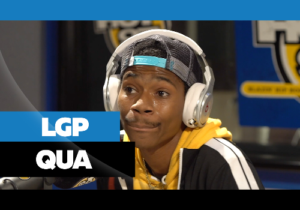


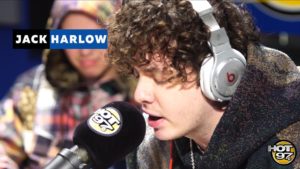



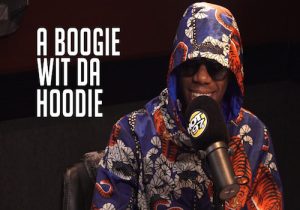


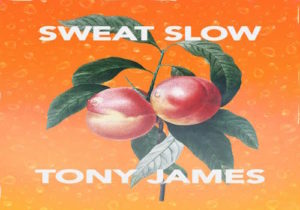
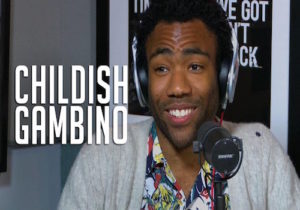

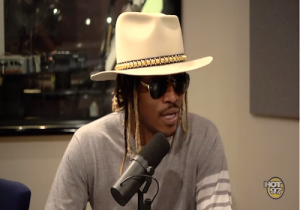




You’re a superb internet marketer. The site packing quickness is actually wonderful. It kind of feels you’re executing any kind of special strategy. Also, A contents will be must-see. you must have done a great task for this make a difference!